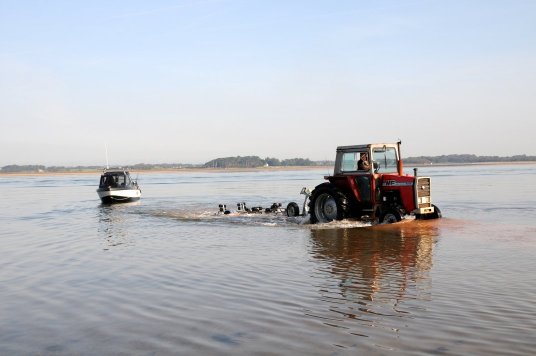Indespension Flushing Trailer Brakes

At the time of writing (November 2009), British law states that it is illegal for a family road vehicle such as a car or 4WD to tow any trailer with a laden weight in excess of 750 Kg, unless the trailer wheels are fitted with brakes. In effect, this means all or the vast majority of small boat trailers. Despite the fact that some people may well still want to fish out of a 13 foot open boat while carrying the outboard motor, fuel and all the tackle in the back of the car to keep the trailed weight under 750 Kg, they clearly would be the exception to the rule. But remember, it is the laden weight of the unit as a whole including the boat, engine and the trailer itself, plus everything carried within it including fuel, batteries and anchors which can really bump the weight up. What this also means is having brakes that work – not disconnected or rusted solid. And therein lies the bane of all small boat angling.
Moving parts and salt-water do not make good bed fellows. So unless you launch in freshwater, or from a slip with permanent water so steep that you hardly need to get the tyres wet, then sooner or alter you are going to have trailer brake function problems. From an open beach it goes without saying that the hubs and drums are going to get a good dunking pretty much every trip. So much so that we don't even bother trying to keep ours dry. You just learn to live with the constant threat of brake problems. Not so much on the way home after a good wetting as when you come to move the trailer the following trip after its been left standing, particularly if you've put the hand brake on allowing the brakes to seize up in the on position.

For years I have been banging on about this problem. Long before Rapide brought out their external disc brake system, I was asking why someone had not taken this particular idea on board. Having an exposed system potentially brings many benefits. Freshwater flushing can be accurately targeted, as can regular lubrication of moving parts. In addition to this, if anything does seize up you can both see it and deal with it there and then without a full strip down. Why more manufacturers don't go for this system was something I raised with the R&D people at Indespension who produce the famous RollerCoaster trailer which I use. They say it is because there is no nationally approved standard to work to which would leave those that did fit them liable in all sorts of ways should some unfortunate incident occur. So what are the alternatives.
One that has been around for some time, though mainly on a DIY basis has been brake drum flushing with freshwater. Drilling a hole in the back plate of the brake drum to send freshwater through has been the usual procedure. But until recently, no formal investigation into the effectiveness of this technique had been undertaken. However, in part due to pressure from me to the powers that be at Indespension, they eventually agreed to undertake some trial investigations, and possibly even incorporate it into their range if successful. But first they needed proof of it's value. Initially they experimented with the positioning of the hole using talcum powder inside the drum to simulate salt accumulations. The more powder flushing could remove, the more effective the location of the input hole.
The next stage was to see if the talc simulation could be translated into real world salt-water use. To do this, our brand new RollerCoaster 5 was fitted with the proposed flushing unit and put in to regular use for 12 months, reliant on flushing alone and no mechanical maintenance in an attempt to get the best possible field testing results. Actually, it went one better than that even because for a number of reasons, the proposed 12 months ran over to closer to 18 months. Then I had to take it back to the maintenance depot in Bolton for the first time since it had left the Horwich factory. Quite a tense moment to say the least. But to be honest, we should not have been worried. Because apart from a bit of surface rust, all the moving parts were still fully functional. So after a quick blast with a brake and clutch cleaner aerosol to remove any dirt, then a few blasts with the copper slip aerosol to the moving it parts, it was all put back together again and I was on my way.
Good new indeed, especially considering the fact that in all cases flushing was only done after the journey home from the trip due to lack of freshwater facilities out in the field. Obviously, frictional heat generated by braking en route home, and ambient air temperatures during the summer months must lead to some evaporation which you would have though would leave salt deposits that would be hard to flush away later. So the sooner you can send some freshwater through the drum the better - a point I have since put to the indespension people explaining that I had also experimented with a portable water supply and pump. I bought myself one of those pump up fence paint sprays from B & Q to use in the garden, but gave over using it when it kept spraying the stuff over things I was trying avoid. So rather than see it go to waste I rigged it up to the trailers freshwater feed, though to be honest, the power wasn't really up to it. That however is not the same as saying the idea in principle couldn't work with something better suited to the job. One more idea for the R&D people to invest a bit of the their time into.